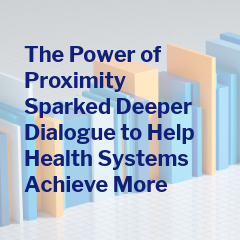
Meet Our Experts
Meet the industry-leading voices behind our exclusive insights on Prescribed Perspectives

Your health system's dedicated digital destination for valuable industry insights and cost-saving strategies to achieve more for the business of pharmacy.

Meet the industry-leading voices behind our exclusive insights on Prescribed Perspectives

In a unique, retreat-style setting, health systems leaders had close conversations around best practices, wins, struggles, and solutions.

An exclusive introduction to our newest services and solutions designed to help forward-thinking health systems modernize their specialty and infusion strategies.

Drug shortages have decreased, but supply chain complexity requires ongoing innovation and resilience to maintain drug availability.

Integrated health system specialty pharmacies improve medication access, enhance treatment plan adherence, and support better outcomes.

Learn how McKesson is helping advance the 340B program through strategic customer engagement and insights.

Explore key trends and strategic recommendations from our experts to help you achieve more.
Visit our Contact Us page to get in touch with Human Resources, Investor Relations, Sales and Support, or a specific location.
Contact UsVisit our Job Search site to find open positions by location or job function.
Learn MoreVisit our Contact Us page to get in touch with Human Resources, Investor Relations, Sales and Support, or a specific location.
Contact UsVisit our Job Search site to find open positions by location or job function.
Learn More![System.Func`1[System.String]](/siteassets/images/z-mckesson-logosicons/health-systems2.png)